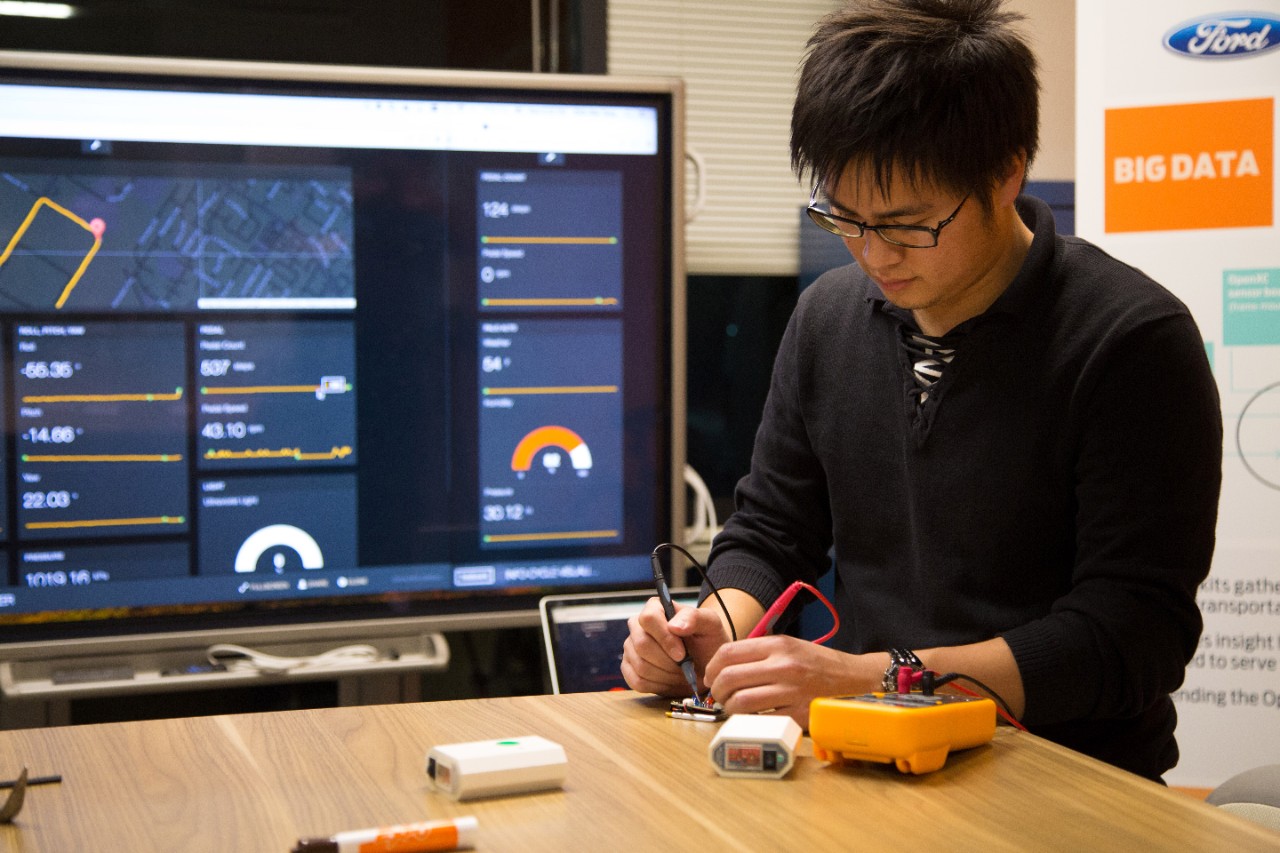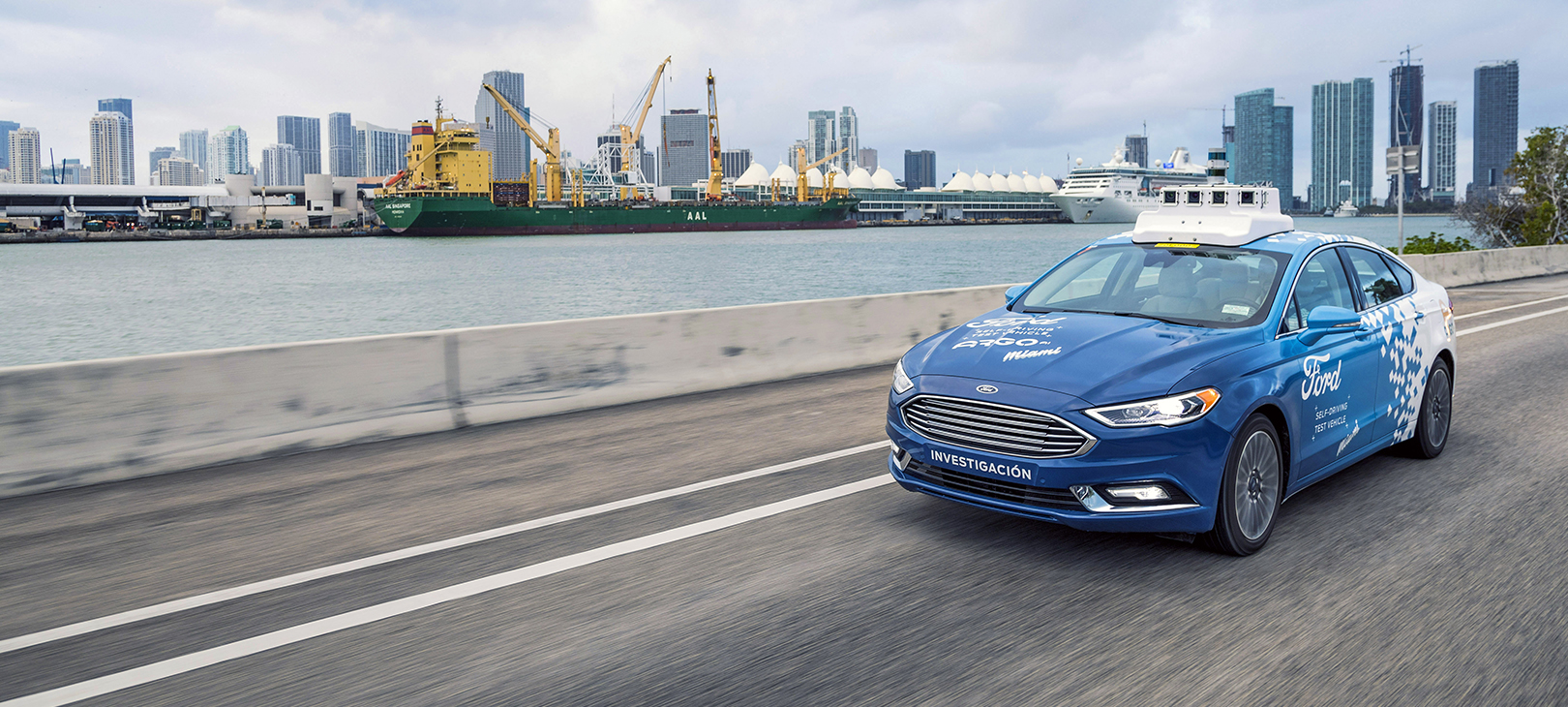FORD OPENS NEW SILICON VALLEY RESEARCH CENTER TO DRIVE INNOVATION IN CONNECTIVITY, MOBILITY, AUTONOMOUS VEHICLES
- Ford is opening the Research and Innovation Center Palo Alto to accelerate its development of technologies and experiments in connectivity, mobility, autonomous vehicles, customer experience and big data
- Ford forms research alliance with Stanford, delivering Fusion Hybrid Autonomous Research Vehicle to university engineers for next phase of testing
- Dragos Maciuca, an experienced Silicon Valley engineer, joins Ford from Apple to serve as senior technical leader at Research and Innovation Center Palo Alto; additional hiring plans will support Ford having one of the largest automotive research teams in Silicon Valley
Ford today opens the Research and Innovation Center Palo Alto, growing its global research team and accelerating the company’s innovation in connectivity, mobility, autonomous vehicles, customer experience and big data.
“At Ford, we view ourselves as both a mobility and an auto company, as we drive innovation in every part of our business,” said Mark Fields, Ford Motor Company president and CEO. “This new research center shows Ford’s commitment to be part of the Silicon Valley innovation ecosystem – anticipating customers’ wants and needs, especially on connectivity, mobility and autonomous vehicles. We are working to make these new technologies accessible to everyone, not just luxury customers.”
The all-new Research and Innovation Center Palo Alto joins Ford’s global network of research and innovation centers, including its location in Dearborn, Michigan, which focuses on advanced electronics, human-machine interface, materials science, big data and analytics; and Aachen, Germany, which focuses on next-generation powertrain research, driver-assist technologies and active safety systems.
With the new facility, Ford expects to have one of the largest automotive manufacturer research centers in Silicon Valley by the end of the year, with 125 researchers, engineers and scientists. Located in Stanford Research Park, the facility also expands Ford’s physical footprint – with further expansion planned in the near future. Ford opened its first Silicon Valley office in 2012.
Leading the new research center is Dragos Maciuca, an engineer who joins Ford from Apple with a background in consumer electronics, semiconductor manufacturing, aerospace and automotive. As senior technical leader for innovation, Maciuca brings extensive Silicon Valley experience advising startups, developing and commercializing products, collaborating with universities and leading cross-functional teams. Maciuca holds a Ph.D. in Mechanical Engineering from University of California, Berkeley and an MBA from its Haas School of Business.
Experiments in motion
Earlier this month, the company introduced Ford Smart Mobility at the 2015 International CES. It outlines Ford’s plans to accelerate innovation in connectivity, mobility, autonomous vehicles, customer experience and big data. The Palo Alto team plays a critical role in research and development in these areas.
“Future mobility solutions will require fresh ideas and vigorous collaboration between researchers inside Ford and with other technology leaders outside the automotive industry,” said Raj Nair, Ford group vice president, Global Product Development and chief technical officer. “Our Palo Alto research team will build on existing relationships with universities and technology companies, and forge new ones to help us create and apply the appropriate technology working together.”
At the opening event, Ford offered a sneak peek at some of its projects in key areas, including:
- Connectivity: Ford is integrating with the Nest application programming interface, targeting home energy and emergency system management while on the road through a series of research experiments. A vehicle communicates with the Nest Thermostat to switch it to Auto-Away™ mode reducing energy use automatically when homeowners leave. Once close to home, the vehicle sends an alert to set the house thermostat to the preferred temperature. Nest Protect can warn Ford SYNC® when home emergency notifications are triggered. Ford is also working with Carnegie Mellon University-Silicon Valley to develop improved embedded speech recognition that supports more natural language. The system relies on graphics processing unit computing – allowing for quicker, more powerful processing. The new technology relies on more natural speech patterns rather than a restricted set of commands to perform in-car tasks such as hands-free phone dialing or requesting navigation.
- Mobility: As the next phase in Ford’s Remote Repositioning mobility experiment, the Palo Alto team is now testing the ability to drive vehicles located on Georgia Institute of Technology’s campus in Atlanta from the Bay Area to prove out the new technology. A person sitting in the Palo Alto laboratory can access real-time video streamed over existing 4G/LTE technology to drive golf carts thousands of miles away. This could help lead to more affordable and effective ways to manage car-sharing initiatives, or park vehicles remotely as a new form of valet parking.
- Autonomous vehicles: While Ford’s research and development in autonomous vehicles is a global effort, including ongoing work with University of Michigan and Massachusetts Institute of Technology, the Palo Alto team will expand collaboration with Stanford University that kicked off in 2013. For this next phase of research, Ford is contributing a Fusion Autonomous Research Vehicle to the Stanford engineering program to begin testing the path planning-and-prediction algorithms researchers have developed over the past year. In addition, the Palo Alto team developed a virtual test environment based on gaming software, called aDRIVE (for Autonomous Driving Refined in Virtual Environments), that will test algorithms such as traffic sign recognition in dynamic driving situations. This allows for more aggressive time lines for validating driving algorithms to prepare for on-road testing.
- Customer experience: Ford is testing an advanced human-machine interface to better understand how customers prefer to control systems with a significant amount of functionality – such as the high-tech, multicontour seat. The seat features 10 adjustments plus two controls for 11 inflatable air bladders that can be used for massage functions. Ford is researching the most intuitive and effective way to control the seat, including using natural language speech recognition and a smartphone- or tablet-based interface.
- Big data and analytics: Ford is leveraging its OpenXC platform to help learn how customers are using their vehicles, and is conducting analytics to detect patterns and learnings that can lead to product improvements or new mobility services. In addition, Palo Alto-based engineers are expanding their research to develop sensor kits to gather information from bicycles and other common forms of transportation in urban areas. The devices gather data including wheel speed, acceleration and altitude. The data could provide insight into how alternate modes of transportation might be best positioned to serve future urban mobility needs.
“Growing the Palo Alto team will strengthen our global research prowess and drive innovation needed to meet the needs of our customers in the future,” said Ken Washington, vice president, Ford Research and Advanced Engineering. “Working together with the Silicon Valley research community will spark the new ideas, products and services that will help Ford once again change the way the world moves.”
The new Research and Innovation Center Palo Alto hopes to further existing relationships between Ford and San Francisco Bay Area technology companies and universities, as well as grow new connections, scout new technologies and collaborate on solutions for future mobility challenges.




